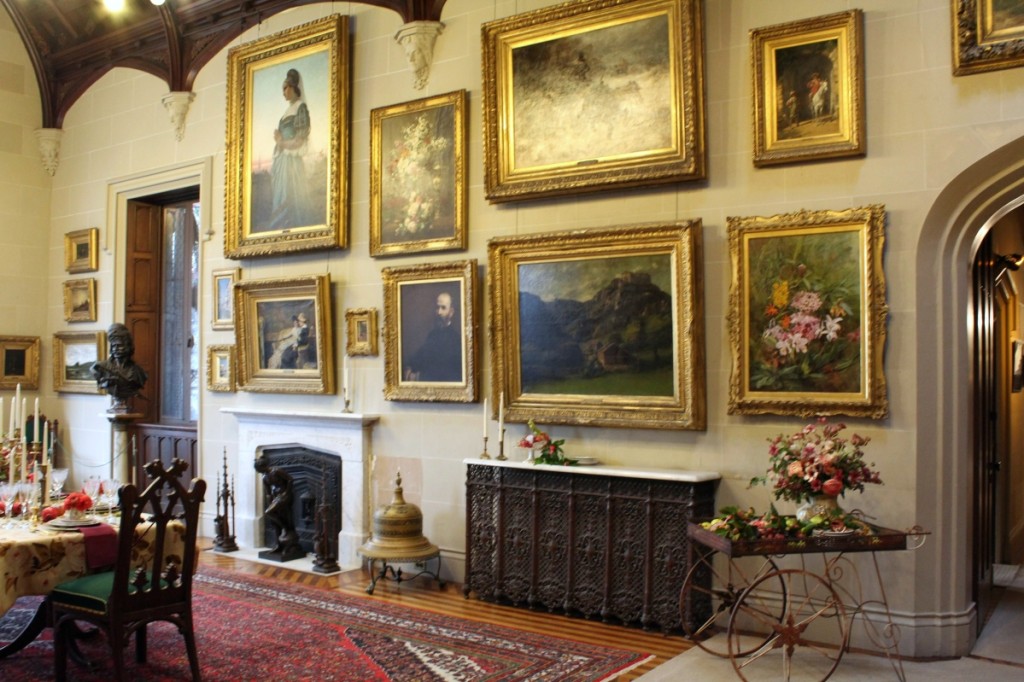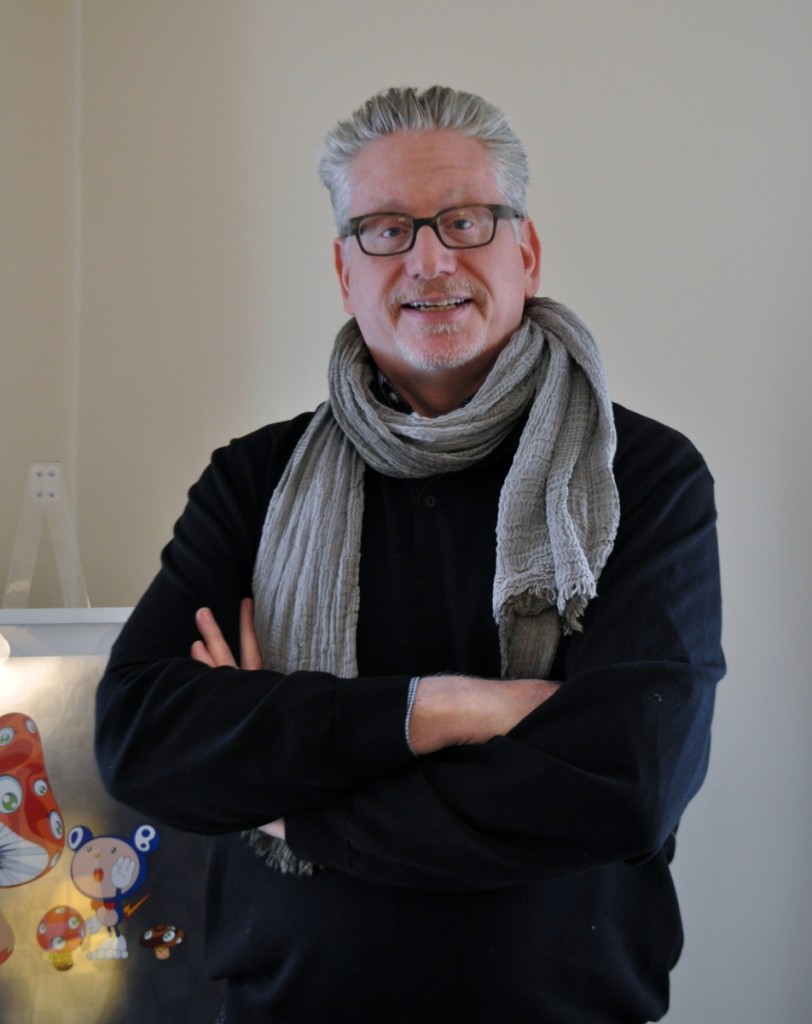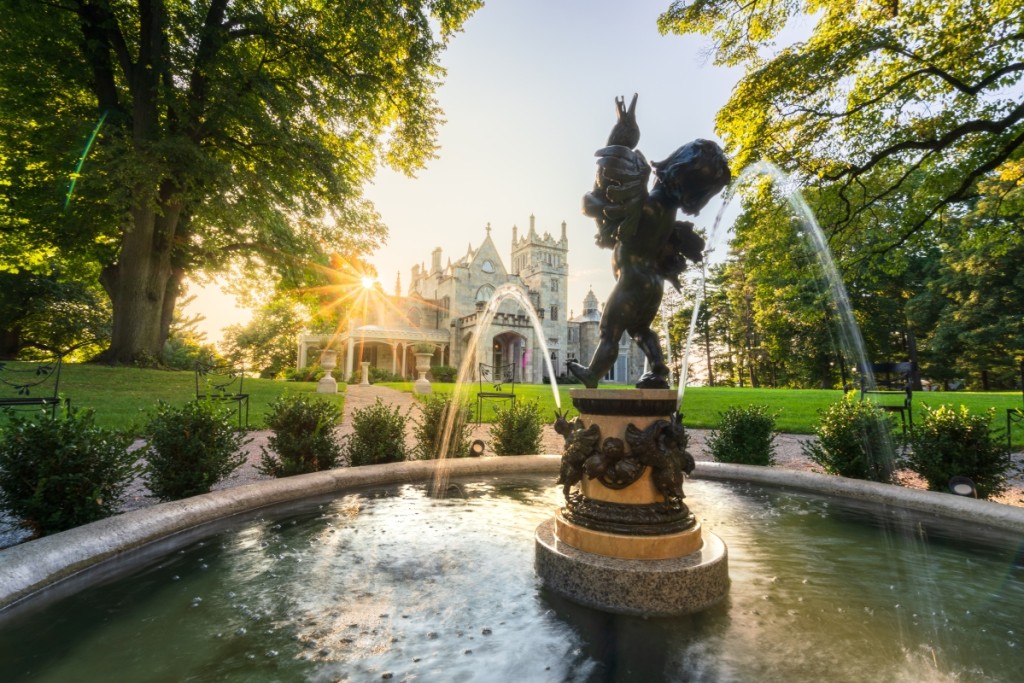In 2012, Howard Zar turned a multifaceted career – up to that point as corporate and financial communications executive, investment banker and Asian art expert for Sotheby’s – into leading Lyndhurst, a house museum in Tarrytown, N.Y. as its executive director. Renowned as the home of railroad baron Jay Gould, the Gothic Revival mansion overlooks 67 park-like acres above the Hudson River and Governor Andrew Cuomo Bridge. Designated a National Historic Landmark in 1966, it was designed in 1838 by Alexander Jackson Davis and serially inhabited by New York City mayor William Paulding Jr, merchant George Merrit and railroad magnate Gould. We sat down with Zar to find out what is happening at this unique historical treasure. At the time of the interview, the coronavirus pandemic was making its global march, and shortly after Westchester County, along with cities and towns in New Jersey and Connecticut, canceled all nonessential activities, closing the mansion for the duration, including its always-anticipated season opener flower show and antiques show that were set to take place April 4-5.
Must be fun to commute to a mansion every morning to work.
To say the least, yes. A lot of historic houses lost all their property, they’re lucky to have an acre around them. But we have the full, original property with all its glorious, historic trees. So it’s true for me and I believe true for many of our visitors, when you drive through our gates, your blood pressure drops.
How did previous stints on Wall Street, in corporate branding and auctioneering, prepare you for your current role?
When I came to New York I was getting a masters at the Institute of Fine Arts and I was working at Sotheby’s as an arts specialist and auctioneer. Then I went to business school and became an investment banker, did financial public relations and marketing. I also have a house in the Hudson Valley and restore houses on my own. I think it’s this combination of various skills, art history and historic preservation combined with finance, marketing, public relations and a knowledge of business operations that have allowed me to run Lyndhurst. Modern museums have come a long way from being sleepy little institutions. When you read Edith Wharton’s description of the Metropolitan Museum of Art in the Nineteenth Century, it was a place where you could meet your mistress because you could be assured that no one would be there to see you. That’s changed dramatically and museums large and small are now major institutions with multimillion dollar budgets. You have to run them as a business. You have to have to combine the understanding of art and cultural programming, with an understanding of public relations, marketing and finance skills to be able to operate.
Any other skills needed?
The power of social media as a generator of foot traffic is still underestimated. We have had articles in major national newspapers and while these are important, we’re often surprised that we can post something online, and the impact is immediate. People see it. We get calls. We sell tickets; we sell tours. That has really revolutionized the way people view institutions like ours.
Which platforms do you use?
We use a combination of Facebook, Instagram, Pinterest and Twitter to reach different constituents. Facebook skews slightly older and is good for longer content and reposts of articles. Instagram, of course, is picture-oriented and we’re very photogenic. Pinterest is popular with our weddings audience. And although we have a staff managing these platforms, at the highest levels I always pay attention to what we put out on our social media feeds. Interestingly, pictures of the mansion are still one of our most popular posts.
How does Lyndhurst generate its operating funds?
Generally speaking, the properties of the National Trust, which owns and operates Lyndhurst, are expected to be relatively self-sufficient on a local level. The National Trust provides special funding through specific grant programs and extensive operating support, but we’re expected to figure out how to run independently. This is a matter of fiscal prudence as we’re supposed to understand how we can serve our local communities and operate in a way that will allow us to survive the extreme financial pressures that we’ll be facing as a result of the coronavirus pandemic. Our revenue is generated from a variety of different activities. Admissions are a major component, not only for mansion tours but for multiple different types of programming: we have theater in the mansion three times a year; eight jazz concerts on the lawn in summer, attracting thousands of people; a crafts show at Lyndhurst twice a year for about 33 years, and the annual April flower/antiques show. In June we’ll have our outdoor program called “Voices in the Landscape.” The year ends with our Halloween programming in October; a huge Holiday market over Black Friday weekend; and then all through December we have holiday-related programs. And you can have your wedding at Lyndhurst. We have about 40 weddings a year. We also do a lot of television and film shooting here. Every time you buy something in our gift shop, that supports what we do. We also raise funds from individuals, foundations and government entities. As we clearly face significant loss of income due to Covid-19-related program suspensions, we anticipate looking to supporters to help us through these challenging times.
How about institutional funding?
New York state is very generous when it comes to its house museums and publicly accessible landscapes. We’ve had grants both large and small from the state to achieve a lot of different programs, whether a $1 million project to restore our lower landscape or a smaller grant to allow a contemporary artist to do an installation on our swimming pool building.
How would you characterize the property’s current financial health?
We’re basically positioned to break even every year. From the time I started here about seven years ago, we’ve pretty much tripled our revenue base. We were under a million dollars and now we’re about $2.75 million to $3 million annually. However, we know that the coming months will be challenging for us. Our staff is working from home, our events and public opening have been canceled, and this may last for a period of time. Even when the pandemic all-clear is sounded, it may take some time until we fully return to normal capacity. This is the time that we ask all those supporters of historic house museums and of the arts and antiques generally to consider additional support to the places they love.
What developments have you seen since your arrival?
Lyndhurst comprises about 15 buildings. We’ve restored – in whole or in part – every one of the buildings on the property. Besides the common maintenance like fixing leaky roofs, we completely restored the laundry building housed just behind the mansion. We completely restored the bowling alley. We’ve done restorations throughout the carriage house and the adjacent playhouse. And we’ve done a major restoration to the landscape between the mansion and the Hudson River. We’re doing work on our swimming pool building, which we expect to be opening for the first time this year. So our programs have grown dramatically, our visitation, too, and it’s a very different place than it was when I first arrived.
How did you come to partner with Barn Star to produce the annual antiques show?
Since my first job out of college at Sotheby’s, I’ve always been a collector. I know the quality of the Barn Star shows. We often try to create events that will appeal to a number of audiences. For our annual flower show, one of the things we thought would be great is to have an antiques show at the same time because a lot of the antiques collectors would appreciate seeing the mansion. It really makes it a robust weekend for everybody.
What I do know about Lyndhurst is that its own collection is of the periods in which it was a private country home. Items haven’t been brought in to stage a certain look. Can you speak to that?
Lyndhurst is very unique. While it’s more than 175 years old, it was always sold as a country house with most of its contents. Easily, 90 percent of its original art and antiques are still here. From very early on – around the 1860s – we have photographs, which is the way we know that what we have in the house is the actual stuff. So we’ve been able to show real interiors, real taste of the time period. Lyndhurst is a “historic document” in that each room you go into is, by and large, based on photographs. When you go through the house, you can actually see each resident and their aspirations over a long period of time. You see the parlor, which is represented as it was decorated by the very first family when they moved in during the 1840s to Anna Gould’s bedrooms from the 1940s, which is the last thing you see on the tour, decorated the way she had it when she left France in the face of the Nazi invasion and tried to recreate her French lifestyle. You move through the full history of the house.
How many visitors come through each year?
We get about 75,000 a year, which doesn’t include the numerous people who traverse Lyndhurst’s landscape through the Old Croton Aquaduct trail and the Westchester RiverWalk. Lyndhurst is essentially open seven days a week to passive recreationalists.
What impact do you believe the landscape has on attendance?
We’re placing a great deal of focus on landscape. Over the next ten years, you’ll see major restoration and changes, some of which have already happened. Most of the people who live near us use our landscape regularly, walking their dog, hiking or just walking the grounds. So in terms of my local constituency and for the many visitors who come for a once-in-a-lifetime tour, I realize that it’s very important to me to restore that landscape. And just as we have pictures of the interior from the 1860s, we also have photographs of the exterior. We have a topographical map that was done in 1870. So we have a very good record of what historically the landscape looked like. Davis considered himself both an architect and a landscape architect. There are remnants here that we’ve restored that were probably Davis-designed.
You have the original 67-acre parcel?
We do, and Lyndhurst as a landscape was never fully redesigned – it was added on to. The period of significance for the landscape is from 1840 to 1940 and you have a long, long period in which somebody added trees, somebody added bushes which is ultimately an excellent catalog of the changing landscape taste in America over a 100-year-period. A couple of years ago when we were restoring the laundry building, we found a film canister that had a 45-minute color film from 1942 of the full Lyndhurst landscape before it started falling into disrepair.

The second-floor centers around the Grand Picture Gallery hung with its original and varied collection of European paintings. —W.A. Demers photo
What landscape projects have you decided to tackle?
We’ve just completed the first of the major restorations. On the front lawn in front of the mansion, there were a series of late Nineteenth Century Italian marble benches, urns and sundials that were centered by Frederick MacMonnies’ “Pan of Rohallion,” that was previously sold. We were unable to find another “Pan of Rohallion” fountain but were able to find another MacMonnies fountain. Shelia Schwartz generously donated “The Duck Baby” or “Boy with Duck.” So now when you’re here there’s all that wonderful carved marble furniture. We’ve started the first phase of the lower landscape restoration, which in the 1860s was designed to look like Central Park with a series of sidewalks through tree-lined rockeries. We knew those existed, we had all the photos of them and we decided to restore that landscape. We’ll have multiple benches along those walkways, and we’ll be adding back something like 80 trees. There’s a big pear orchard that’s going back in, plus many specimen trees.
One of the big projects on the property is the huge greenhouse, which is currently just a skeletal frame. Any plans someday to restore it?
Over the next decade, we systematically will go through different parts of the landscape. What we’re hoping is that as we make all these improvements to the landscape, as more people become aware of Lyndhurst as a landscape destination, we’ll be able to have the public support that will allow us to start redoing the Lyndhurst greenhouse. It’s stable right now; stabilization was done to it two decades ago. But over time we’ll have to figure what we actually do with it, how do we use it, because restoration has to suit a sustainable use.
Thank you so much for speaking to me about Lyndhurst. For the moment, we welcome visitors to enjoy our lovely landscape, which can be accessed on foot through two historic trails. Because of Covid-19, none of our buildings are currently open, no bathrooms are available, and we do not have staff to assist any visitors. However, we know this will eventually pass. We hope that antiques collectors who have never been to Lyndhurst put it on their calendars to come. There will come a moment when our self-quarantine will pass and we will all want to get back outside and return to normal life. Lyndhurst will be ready to welcome you at the appropriate time.
–W.A. Demers


-1024x767.jpg)




